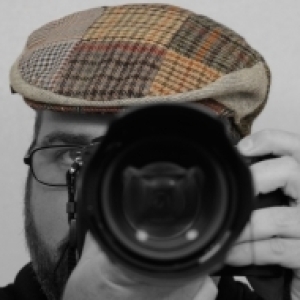La Luna
I decided to try something a little different today, something I've never done before.
When I was younger, my parents bought me a telescope to help encourage my natural interest in the celestial realm. If you've never had the opportunity to look at the planets -or even the Moon- through a telescope, I highly recommend finding a way to do so at your earliest convenience (your local museum, science center, or even local governments usually offer star gazing events). Looking at Saturn and Jupiter through a telescope is something that can only be experienced by seeing it first hand and in real time (not a photograph) - it's breathtakingly surreal to say the least. Even though the Moon is pretty easy to see with the naked eye or a decent pair of binoculars, it too is amazing to look at through a telescope. Naturally, and after experiencing the planets through the magnification of a telescope, I wanted to be able to capture these visuals with a camera.
Well, at that time I was not partaking in the art of photography, but my mother was. I bought the adapter to connect a camera to my telescope but sadly, we never attempted the procedure. I had what is known as a Dobsonian telescope (mine wasn't motorized or computer controlled), which proved problematic when trying to counter the weight of the camera, not to mention trying to keep the planet centered in the eyepiece without the risk of blur. Fast forward several years...
With camera in hand, I have once again decided to photograph celestial bodies - in this case, the Moon. The image above is my first attempt at photographing the Moon with the intention and desire to preserve detail and something more than just a white blob. I performed a quick search on the net and found some helpful sites to get me in the ballpark for exposure settings. I did find, however, that my equipment would leave me on the short end of the stick with regards to capturing a decent sized subject to work with. Currently, my largest lens is a 70-200mm zoom. It was recommended to have at least a 300mm to produce a decent sized capture of the Moon (I'd prefer to have at least a 500mm). I did, however, have a 1.4x teleconverter on hand which makes my largest lens a 98-280mm. So, off I went to see what my equipment and the recommended exposure settings could do. To my surprise, my minimal gear was able to produce a workable capture, which you see above.
I hope to one day attempt this again with a bigger lens but more importantly, I hope to take this new knowledge and experience and combine it with a night shot of a skyline - perhaps creating an interesting and aesthetically appealing final piece.
Until then, I'll go back to enjoying the early morning sky...
- 4
- 0
- Nikon D300
- f/8.0
- 280mm
- 100

Comments
Sign in or get an account to comment.


